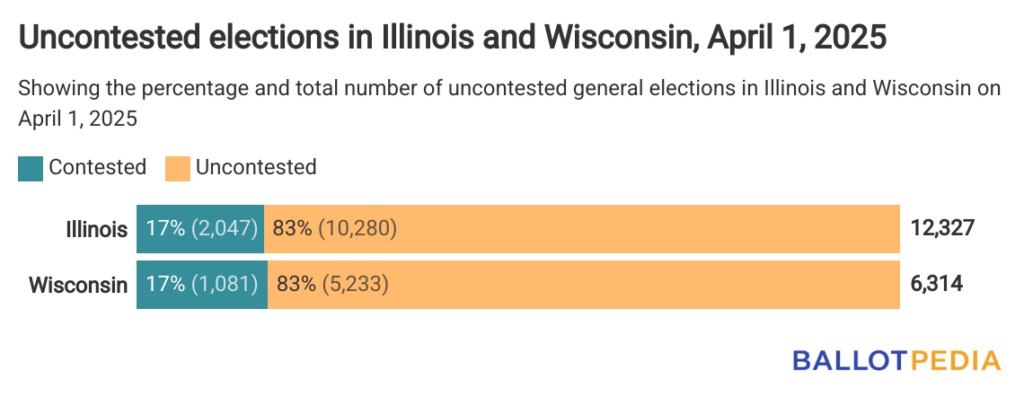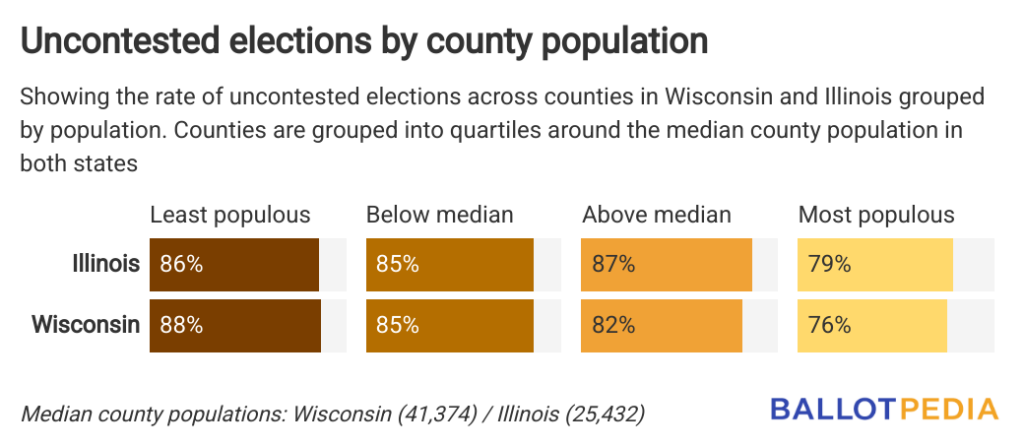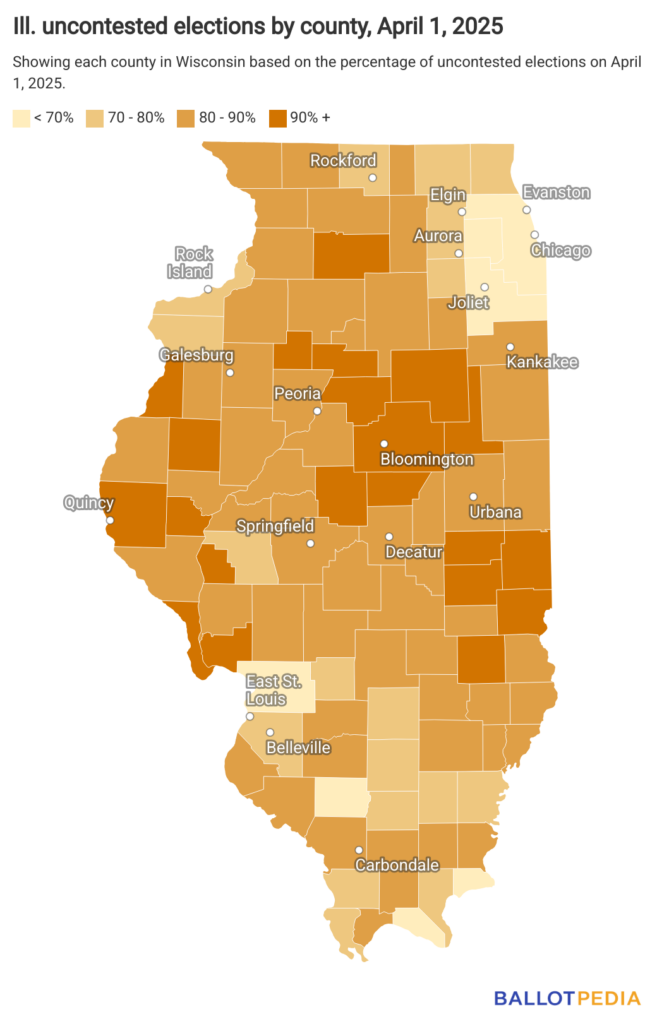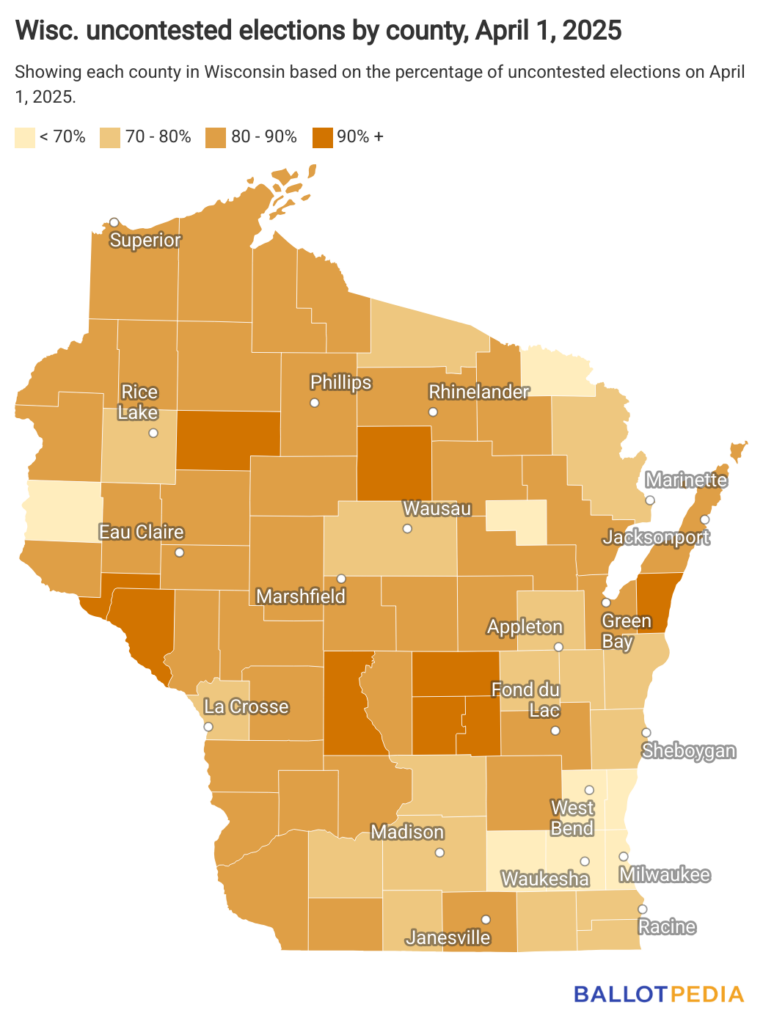Illinois and Wisconsin held a combined 18,641 elections on April 1, primarily local elections to school boards, city councils, and other special districts.
But, in both states, it was clear who the winners would be in a majority of those elections since more than four out of every five elections were uncontested.
An uncontested election is one where the number of candidates on the ballot is less than or equal to the number of seats up for election. Candidates running in uncontested elections are virtually guaranteed victory.

These rates exceed the typical percentage of uncontested elections Ballotpedia has observed nationwide. Throughout 2024, 70% of the 76,902 elections covered were uncontested, and through March 2025, the uncontested rate was 34% of 564 elections.
For Wisconsin, the April 1 figures represent an increase in uncontested spring elections compared to 2024, when 72% of the state's 3,621 elections were uncontested. Ballotpedia does not have historical uncontested election information for Illinois.
In both states, the most populous counties tended to have fewer uncontested elections than their rural counterparts, but the rate of uncontested elections still hovered just under 80%.
In Illinois, mid- to large-sized counties had the most uncontested elections. In the state's counties with populations ranging from 25,500 to 53,000, 87% of elections were uncontested.
In Wisconsin, the least-populous counties had the most uncontested elections, with a rate of 88% in counties with populations less than 19,000.

The map below shows all counties in Illinois based on their rate of uncontested elections.
The lowest rates of uncontested elections were in and around the Chicago metro area. Cook County itself had an uncontested rate of 67%. Adams County, home to Quincy in the western portion of the state, had the highest rate of uncontested elections at 95%.

Similar to Illinois, Wisconsin's Milwaukee metro area tended to have lower uncontested rates. In Waukesha County, for example, 62% of elections were uncontested. Green Lake County, west of Fond du Lac, had the highest rate at 96%.

For Illinois, this analysis includes write-in candidates when determining whether an election was contested or uncontested. Wisconsin figures do not include write-ins and, therefore, could vary slightly from what is shown here.
Both Illinois and Wisconsin are part of Ballotpedia's expanding coverage scope, providing comprehensive election coverage at all levels of government. Oklahoma, also part of that expanded coverage, held general elections on April 1, but unlike Illinois and Wisconsin, Oklahoma cancels uncontested general elections.


